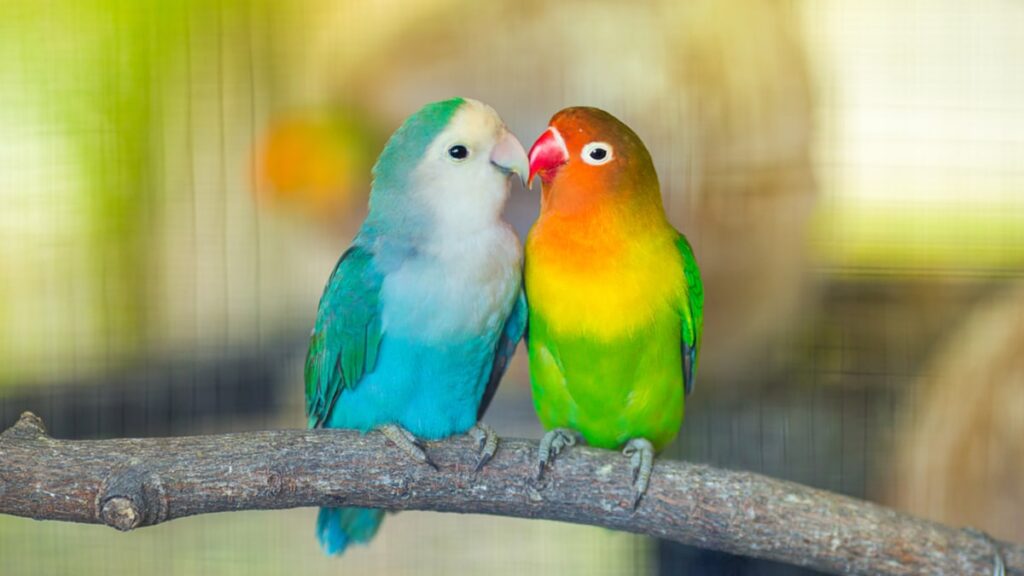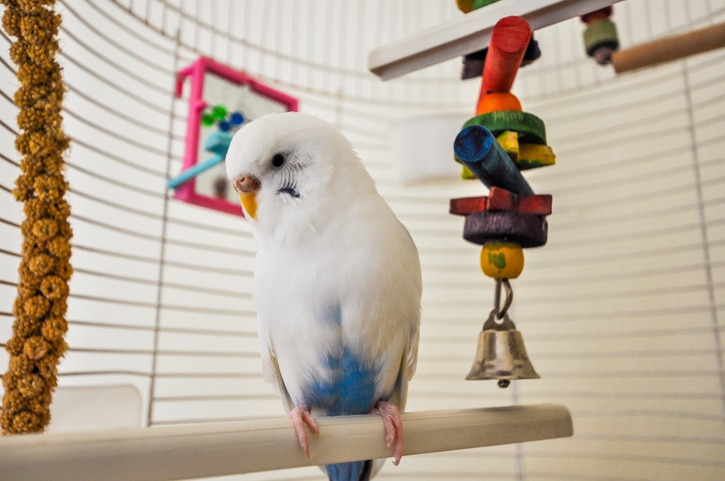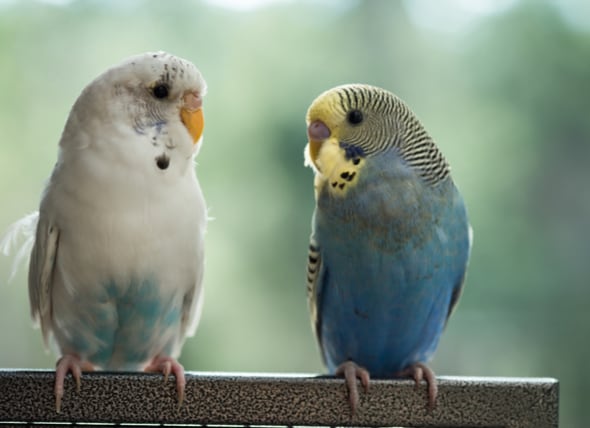Can You House Budgies/Parakeets With Lovebirds?

Photo by Chewy
Q.
I recently lost my beautiful white budgie, Kiki. She and her partner, Tiki, were together for almost six years. I’m sure that he misses her and is lonely in his large cage that they shared.
Prior to Kiki falling ill, I fell in love with a couple of lovebirds and was going to get them because they were very friendly. Can I put the lovebirds in the same cage as Tiki? The bird cage is certainly large enough for the three of them.
I have four other birds, three conures and one canary, so the noise is not at issue here. I’m quite used to it.
A.
I would not advise putting the lovebird pair in the same cage as Tiki. I think that Tiki does need a new friend, and another budgie would be the best companion for him. Check with a bird rescue since I know of several that have aviaries of healthy found and surrendered birds. If Tiki is still healthy, another hen partner would probably work and a young male might also become a good companion for him. If you could find an older bird in need of a good home that could work too. Make sure that you introduce any new bird slowly in a neutral territory rather than just putting the new bird in your budgie’s cage.
Lovebirds can be territorial and could become aggressive toward the budgie. Several years ago, a friend kept several types of estrildid finches, canaries, cockatiels and budgies together in an aviary the size of a bedroom. She provided many branch perches and multiple food and water bowls so all the bird had access to food without a lot of competition. At that point, the budgies were the most dominant of the birds, but they just chased the other birds off of certain bird perches and away from some of the bird feeders without doing any damage to them.
She added two rescued lovebirds to the mix, and everything changed very quickly. I don’t remember if they were a pair but they immediately started attacking the other birds. One of the cockatiels received serious injuries that required veterinary care. My friend removed the lovebirds as soon as she could catch them and placed them together in a large cage within the room. I don’t think they liked it, but it kept the other birds safe. She placed a piece of acrylic on the top of the cage so one of the smaller birds wouldn’t lose a toe if it landed on the lovebird cage.
Remember that smaller birds don’t need smaller cages; they need large cages with smaller bars. Because of their energy level, small birds need lots of room to move around. This is particularly true if multiple birds are being housed together.
While there are always exceptions in the personalities of birds, there are some generalizations that are often true. Not all small birds get along with each other. Some species of finch will bully others and keep them from accessing the food cups. This is especially true if there are breeding pairs. For the most part, even though they are smaller, budgies will dominate the more mild-mannered cockatiels, which pretty much get along with all other small birds. Lovebirds can be aggressive to other smaller and even some larger birds, such as small conures.
Birds that are raised together from the time they are babies can be the exceptions to these generalizations. I have a client who has budgies and lovebirds together, but they were all babies when she put them together. I know of several people with aviaries who mix cockatiels, budgies, Bourke’s parakeets, and the small Pyrrhura conures without incidence. They are in a large space with plenty of food and water bowls so there is no need for competition.
Posted by: Chewy Editorial
Featured Image: apichon_tee/Shutterstock











